Visibility is essential in high-risk, high-traffic areas. Whether you find yourself working in a warehouse bustling with tow motors and scissor lifts, or repairing a section of highway and standing a few feet away from 60 mph traffic, staying highly visible is not just professional—it could very well save your life. Thankfully, there’s an easy solution to our hi-vis needs: safety vests.
Safety vests are ubiquitous and universal. From crossing guards, to construction workers, and even to emergency responders, safety vests keep essential workers in sight and in mind. But not all safety vests are the same. Safety vests are differentiated by type and class, following standards set by national organizations. In this highly visible article, we will go over the different kinds of safety vests, how to maintain them, and when to replace them.
What are the Different Types of Safety Vests?
Safety vests come in three types, differentiated by who wears them and where they work:
Type O (Off-Road): these safety vests are worn by workers who are not working in roadway environments. However, these workers may still be in high-traffic areas bustling with forklifts, industrial equipment, and other large moving objects that can be a hazard.
Type R (Roadway): these safety vests are for those who work in roadway environments and in close proximity to high-speed traffic.
Type P (Public Safety): these safety vests are specifically worn by fire, police, and EMS personnel working on roadways or other hazardous environments. While similar to type R, type P vests typically have more stringent specifications for background and reflective materials.
What are the Different Safety Vest Classes?
The different classes of safety vests are determined by the American National Standards Institute, or ANSI, which is a private organization that sets voluntary standards for safety and quality. These classes are differentiated by the amount of background material, the amount of reflective material, and color.
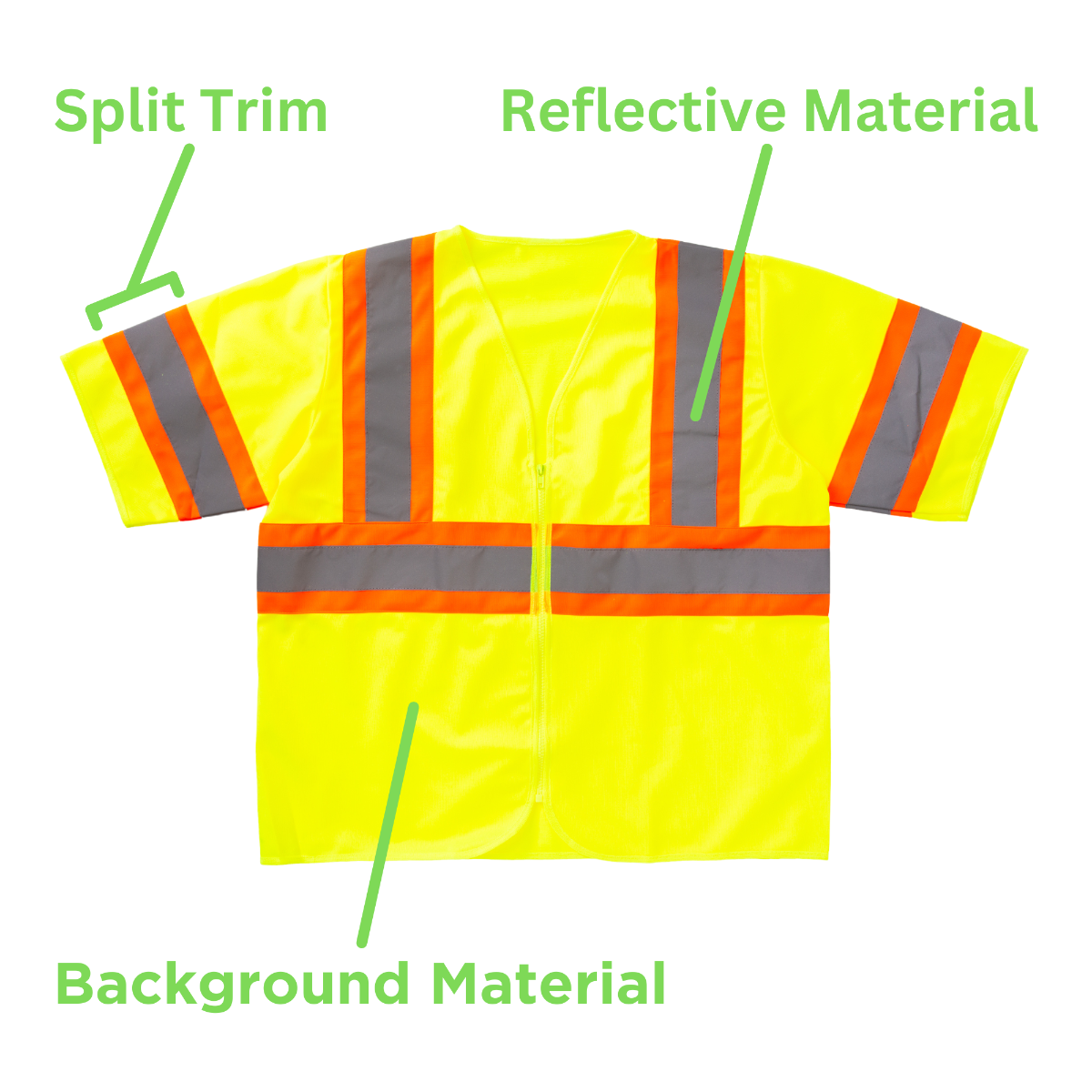
 Non-Certified Safety Vest
Non-Certified Safety Vest
Not all safety vests are certified by ANSI. In fact, there are plenty of safety vests available for purchase that are not in compliance with ANSI’s standards. But this is no accident, as they are often reserved for visitors and contractors. Non-ANSI safety vests are also favored by long-distance runners who jog in conditions with low light levels, such as early in the morning or late at night.
As these vests are not in compliance with ANSI, there are no hard rules determining the measurements for background and reflective materials. Generally, these vests will feature a band of reflective material going around the middle and/or above each shoulder. The background material can be of any size and color.
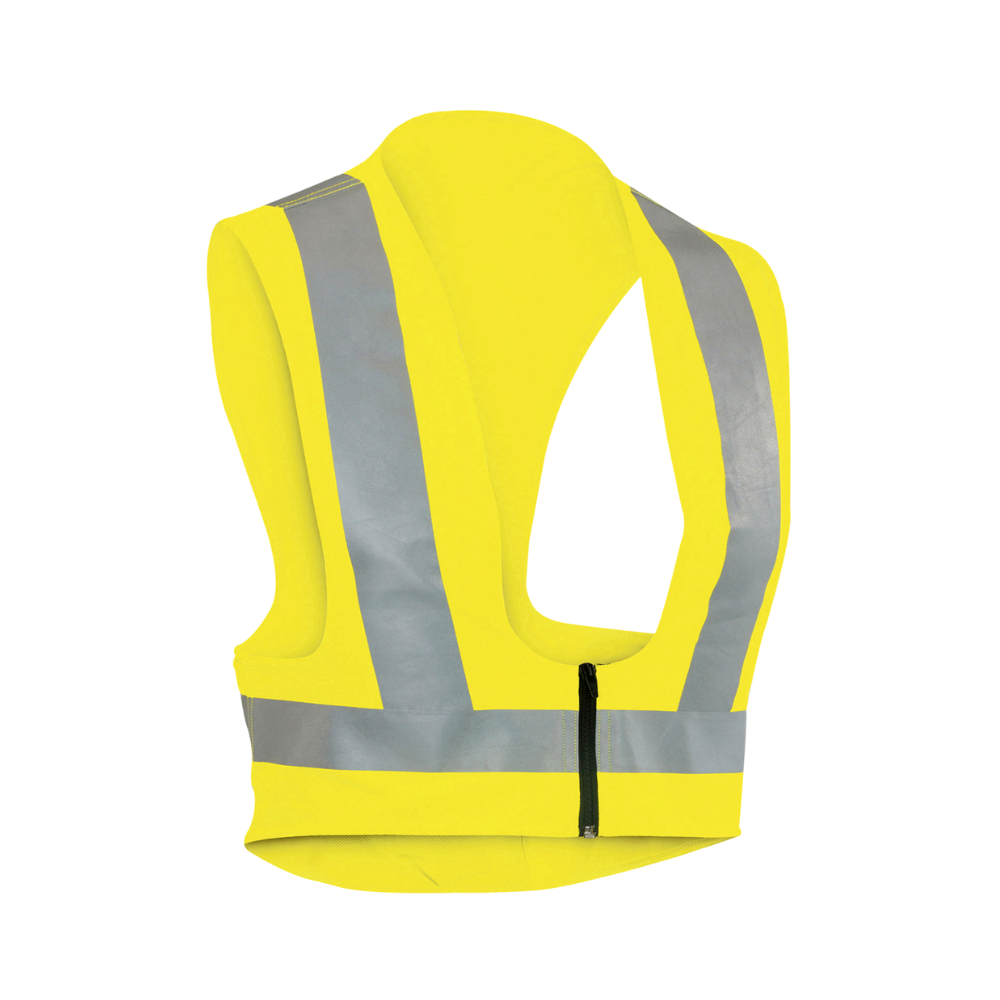 Class I Safety Vest
Class I Safety Vest
Class I safety vests are exclusively type O vests, meaning that these vests are not for roadway use. However, these vests are worn by those who work in environments with large, moving equipment/machines, such as forklifts and floor cranes, where high visibility is still necessary for safe operations. Class I vests are much like non-certified vests, but with clearly defined regulations for their materials.
Class I vests must have at least 217 square inches of background material in bright yellow or bright orange. These vests must have a minimum of 155 square inches of 1-inch width reflective material that goes around the middle and above each shoulder. Class I safety vests are not permitted for traffic zones exceeding 25 miles per hour.
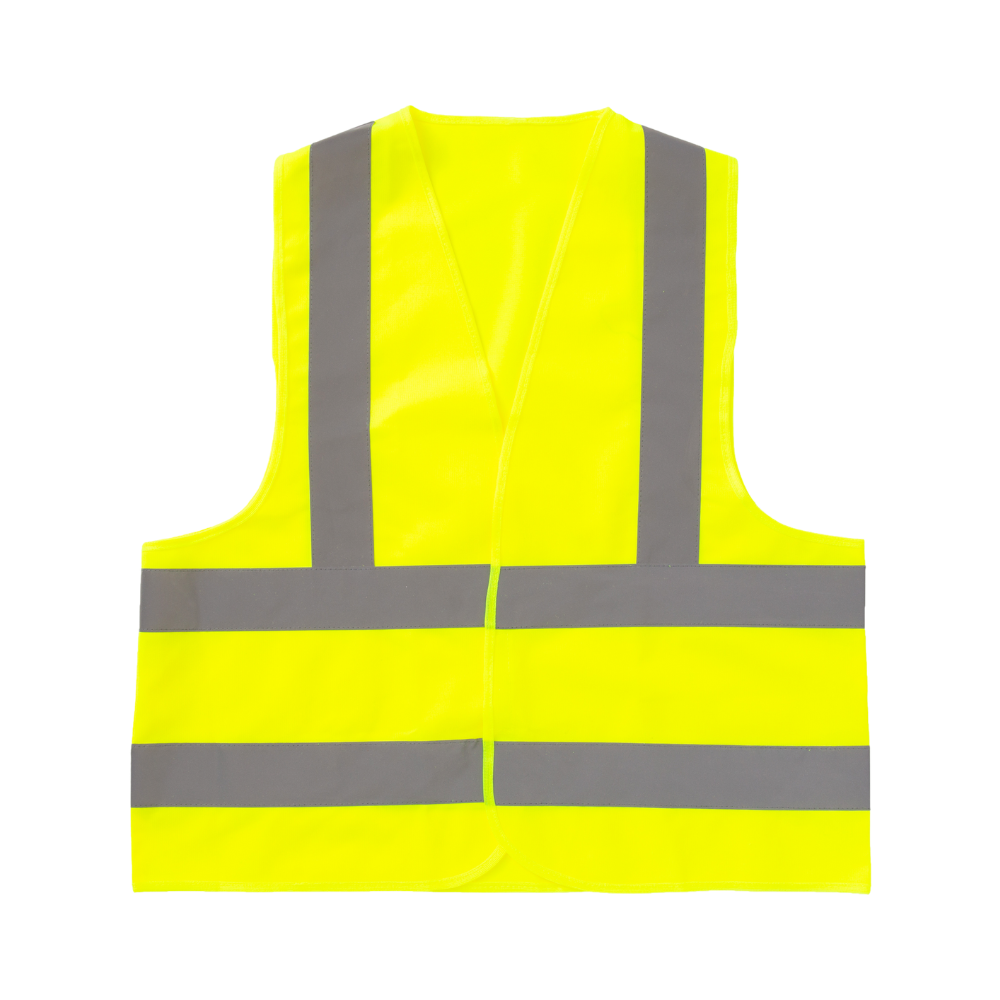 Class II Safety Vest
Class II Safety Vest
Class II safety vests encompass both type R and type P vests, indicating that these vests are intended for use on roadways with moderate traffic speeds. These vests feature more background and reflective materials than class I vests, especially for type P vests, given the increased need for visibility in areas with higher traffic levels.
Class II vests require a minimum of 775 square inches of background material in hi-vis yellow or orange. The vests need 201 square inches of reflective materials at a 2” width, or 1” if it’s a split-trim design. The reflective materials must go around the middle once or twice and above each shoulder. Class II vests are not permitted for traffic zones exceeding 49 miles per hour.
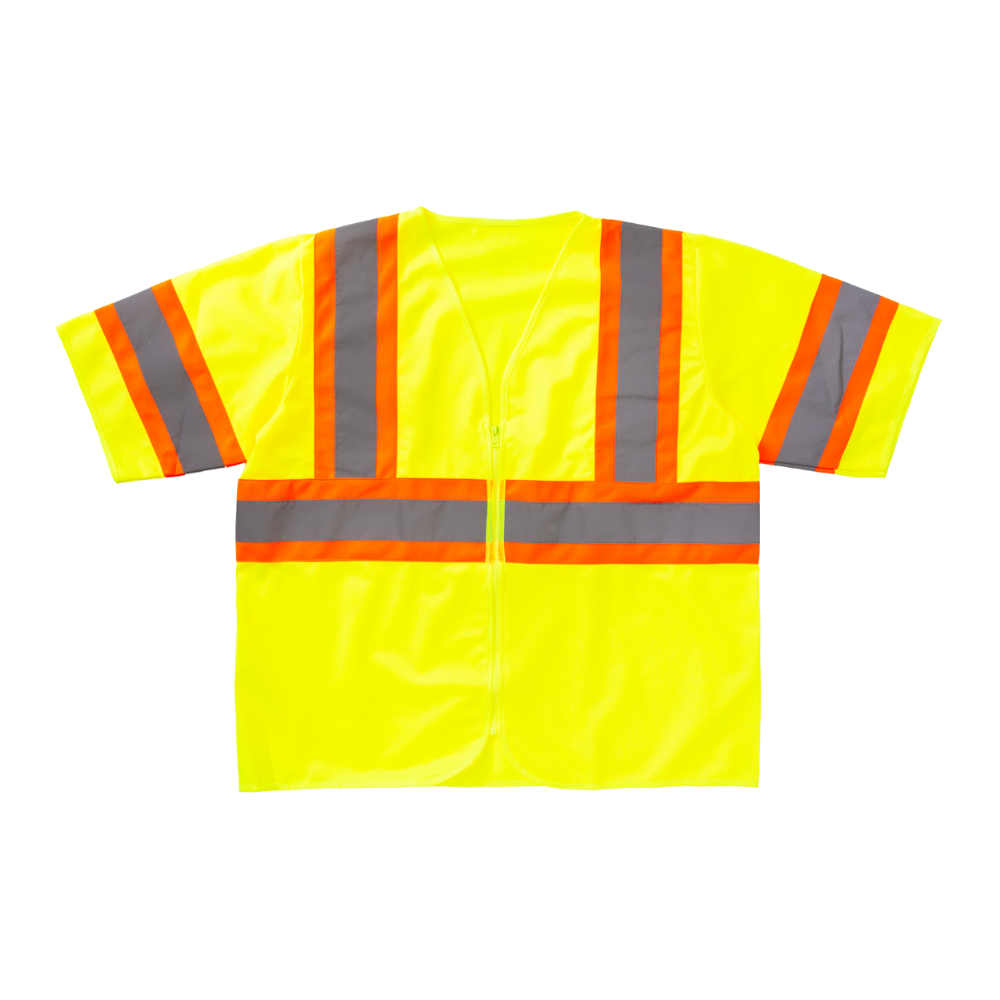 Class III Safety Vest
Class III Safety Vest
Class III safety vests are the most intricate kinds of hi-vis vests. Like class II, class III vests include both type R and type P vests. However, these vests are designed for roadways with traffic speeds at 50 miles per hour or more. Because of this, these vests have the highest amount of high-visibility materials of all classes. On top of this, these vests are only kind to have sleeves.
Class III vests must have at least 1,240 square inches of background material in bright yellow or orange. These vests need a minimum of 310 square inches of reflective material in a 2” width, or 1” if it’s a split-trim design. The reflective material must go around the middle once or twice, above each shoulder, and around each sleeve. Class III safety vests are acceptable for any kind of traffic zone at any speed.
Class
|
Image
|
Types
|
Background Amount
|
Background Colors
|
Reflective Amount
|
Reflective Width
|
Sleeves
|
Traffic Zone
|
|
Non-ANSI
|
 |
N/A
|
N/A
|
Any
|
N/A
|
N/A
|
Maybe
|
N/A
|
|
Class I
|
 |
O
|
217 sq. in.
|
Yellow, Orange
|
155 sq. in.
|
1"
|
No
|
<25 mph
|
|
Class II
|
 |
R, P
|
775 sq. in.
|
Yellow, Orange
|
201 sq. in.
|
2" or 1" for split trim
|
No
|
25 - 49 mph
|
|
Class III
|
 |
R, P
|
1240 sq. in.
|
Yellow, Orange
|
310 sq. in.
|
2" or 1" for split trim
|
Yes
|
50+ mph
|
How Do I Care for My Safety Vest?
Buying and wearing your safety vest isn’t the end of the story. You also need to properly maintain your safety vest to ensure that it’s working for you. For instance, if your safety vest is covered in mud, its high-visibility properties are significantly reduced, leaving you in danger of being hit by someone who can’t see you.
Most safety vests can be machine-washed. Simply add it to a load with similar colors, select a delicate cycle, and run it with cold water. Mild detergents are fine to use, but a high-strength detergent may rapidly fade the colors. Then, place it in your dryer and run it on low heat. Routine washes will slowly fade the colors over time, so be on the lookout for this.
Due to the materials used to make safety vests, you should avoid ironing or dry cleaning your vest or you may compromise its material integrity.
When Should I Replace My Safety Vest?
Safety vests don’t last forever. The average lifespan of a standard safety vest that is used daily is around 6 months. Premium quality vests or vests worn infrequently can last up to three years depending on their condition and use.
ANSI has color inspection cards to determine the efficacy of safety vests. If your vest does not match the colors on the inspection card, it’s time to replace it. Furthermore, if your vest is damaged or fails to close properly, it needs to be replaced.
Final Thoughts
Learning about your safety vests is no waste of time. In fact, wearing the right safety vest in the right environment can keep you from serious injury or even death. And while ANSI isn’t an official government agency, their standards for personal protective equipment (PPE), safe operations, and more are near-universally accepted by American industries.
Whether you’re a crossing guard, a construction worker, or a fireman, visibility in hazardous settings is essential for your safety and for the safety of others. While class III vests are acceptable for any situation at any traffic speed, they may be overkill if you’re just dealing with golf carts and hand trucks. Take the time to learn what kind of an environment you’re working in to make sure you have the appropriate vest for it.
And while you’re here, check out our selection of safety vests, available in ANSI-certified class II and class III. Our safety supplies come with free shipping, so you can guarantee that you’ll be highly visible in hazardous conditions in no time.
For more information on our safety supplies, take a look at our article going over hard hat classes and best practices.


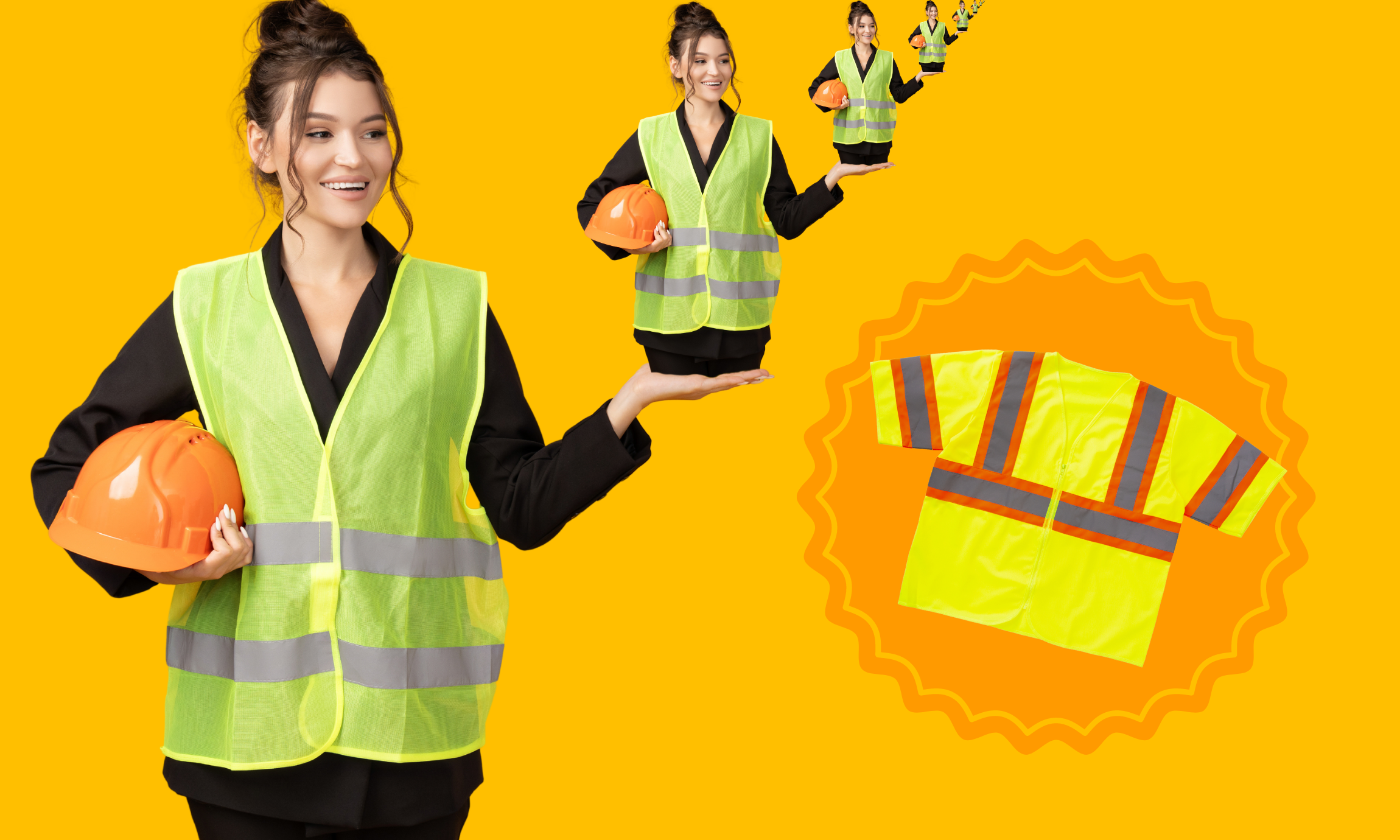

 Non-Certified Safety Vest
Non-Certified Safety Vest Class I Safety Vest
Class I Safety Vest Class II Safety Vest
Class II Safety Vest Class III Safety Vest
Class III Safety Vest

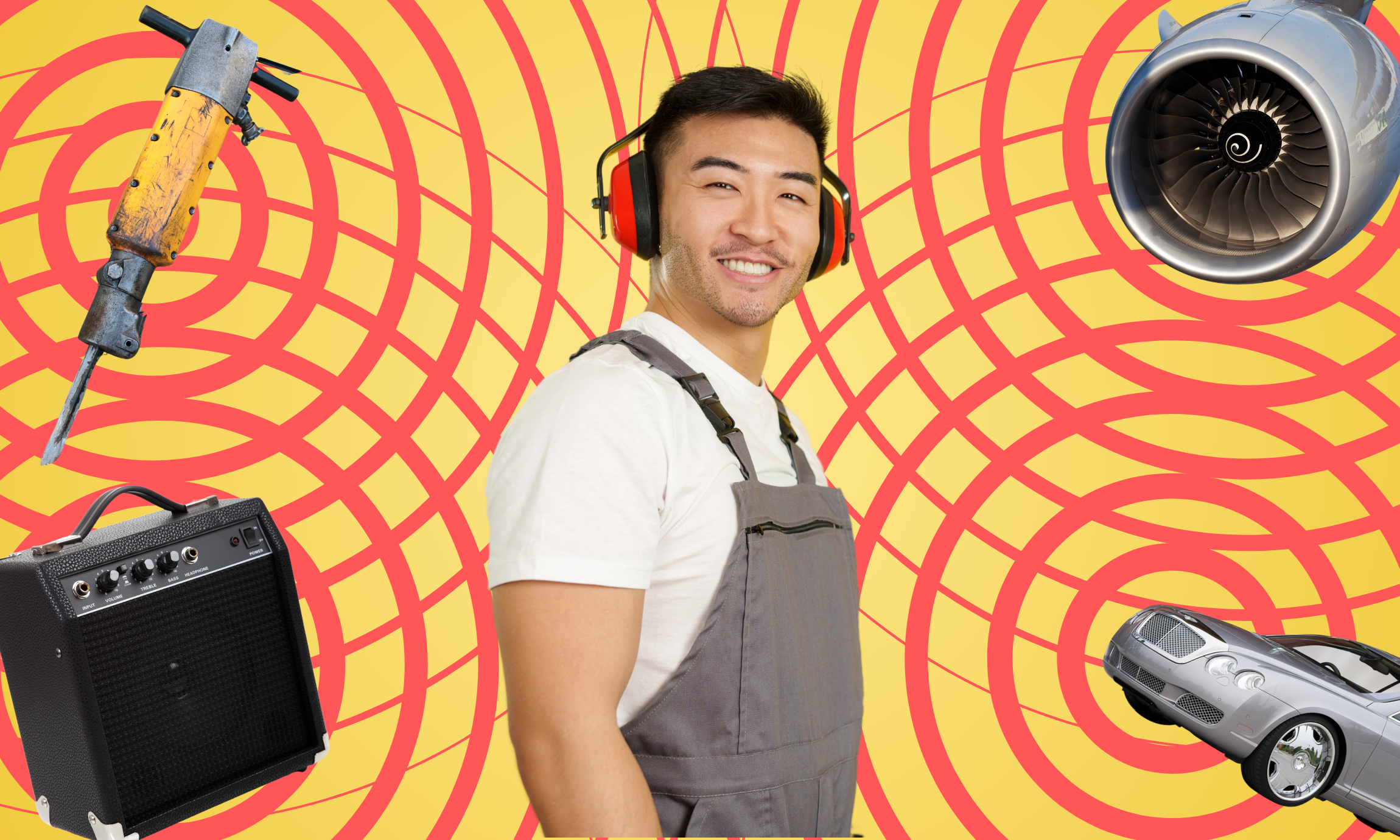
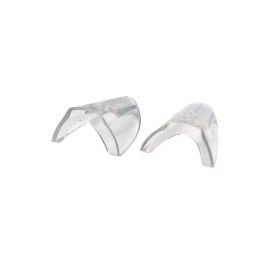
Log In